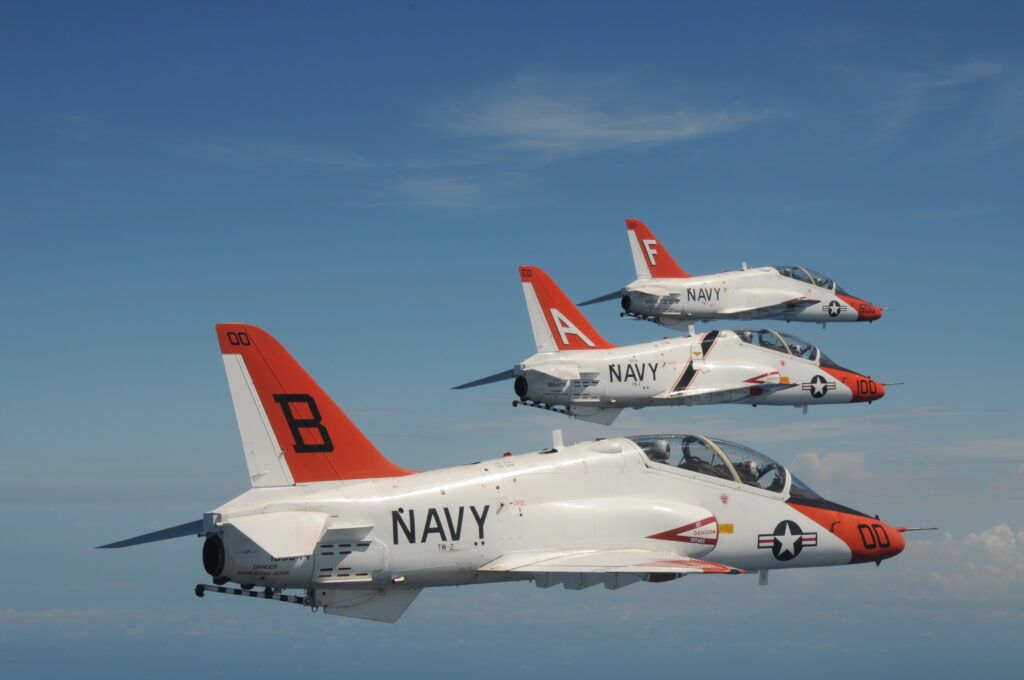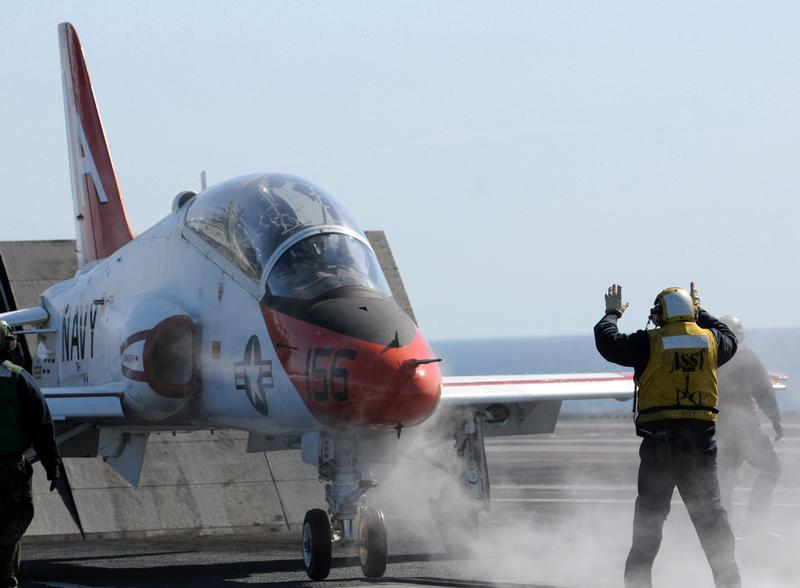Air Force T-6s Return to Flight; OBOGS Monitoring Cited
Posted on
CORRECTED: Removed Reference To AT-6, Which Is Not Derived From T-6 WASHINGTON: The basic training plane for Air Force pilots, the propeller-driven T-6 Texan, is returning to flight almost one month after being grounded after a series of unexplained physiological events (what we used to call suspected hypoxia incidents). As is the case with most such… Keep reading →
JPO Fixing F-35 Oxygen, Carrier Landing, Software Glitches: VADM Winter
Posted on
CORRECTED number of hypoxia incidents ARLINGTON: As the F-35 prepares for a massive ramp-up in production, the program is fixing the costly, controversial plane’s last technical glitches, Vice Adm. Mat Winter said in his first press conference since becoming program director. Winter expressed confidence about three problems in particular: air supply for pilots, carrier landings, and… Keep reading →
Marines Order Stand-Downs After Crash Deaths: What’s Wrong?
Posted on
With 19 Marines killed in two aircraft crashes since July 10th, Marine Corps Commandant Robert Neller has ordered all aviation units to stand down for safety reviews. This summer’s crashes come after months of rising accident rates, with a total of 22 deaths and 18 “Class A Mishaps” – incidents involving loss of life or… Keep reading →
Navy T-45 Trainers Will Return To Flight In July With Air Supply Fix
Posted on
Navy flight training will resume in July when T-45 Goshawk trainers receive fixes to their troubled air supply, the three-star Commander, Naval Air Forces said this week. The aircraft had been flying only limited flights at low altitude for fear an oxygen-deprived pilot would become disoriented and crash. Now, instructors will start flying again in… Keep reading →
ALIS Glitch Grounds Marine F-35Bs
Posted on
WASHINGTON: A glitchy software upgrade to the ALIS ground support system has grounded the Marine Corps F-35B squadron based in Yuma, Arizona, the F-35 Joint Program Office announced. Details are sparse, but a Marine Corps statement (reproduced in full below) said the unspecified “anomalies” only affected maintenance codes and only in the Yuma squadron, VMFA-211.… Keep reading →
Hypoxia Worries ‘Top Issue’ For Boeing Defense CEO; Cobham Tech Unveiled
Posted on
PARIS: Boeing Defense’s new CEO, Leanne Caret, told me this afternoon that investigating suspected hypoxia cases is “a top priority for Boeing,” and she is receiving weekly briefings on the issue. Pilots are supposed to be tough physical specimens who can handle 9 Gs and still think fast. But flying at altitude — often in… Keep reading →
Navy Can’t Find ‘Culprit’ Of T-45s Suspected Hypoxia; Mattis Pledges Afghan Strategy
Posted on
WASHINGTON: The Navy hasn’t been able to process 25 prospective pilots for each of the last three months as it struggles to find the cause of what may be hypoxia episodes afflicting many T-45 pilots. The service has not been able to ferret out what is causing them to suffer from headaches and other symptoms. Vice Adm. Paul Grosklags, the… Keep reading →
JPO Launches Team To Look At 5 F-35A Luke AFB Hypoxia Events
Posted on
WASHINGTON: The two Air Force F-35As scheduled to cross the Atlantic Ocean and fly at the Paris Air Show are still scheduled to go after Luke Air Force Base declared a one-day stand-down to brief pilots on five apparent hypoxia incidents afflicting pilots there since May 2. “The F-35 Joint Program Office, along with the U.S.… Keep reading →
New Problems Hit T-45; Navy Tightens Flight Limits
Posted on
Days after the Navy’s T-45 Goshawk trainers returned to flight under strict safety restrictions because of problems with their air supply, the service felt compelled to make them even stricter. An aircrew’s report of “minor headaches” prompted the tighter limits, a Navy spokesperson told Breaking Defense. Only one flight out of 92 over 48 hours reported such… Keep reading →
Oxygen Problems Afflicted 297 Navy & Marine Hornets
Posted on
CAPITOL HILL: It turns out Navy pilots like to breathe. That’s a potential problem in the Navy’s mainstay fighter, the F-18 Hornet, which is suffering failures of its On-Board Oxygen Generation System (OBOGS). While rare, a single case of in-flight oxygen deprivation could potentially kill the pilot, destroy a $30 million to $60 million aircraft, or… Keep reading →



![CF-2 Flight 158 with Mr. Dan Canin and CF-1 Flight 189 with LT Chris Tabert on 18 January 2013. First dual refueling of F-35C on KC-130 tanker. [Lockheed Martin]](https://sites.breakingmedia.com/uploads/sites/3/2013/05/F35C_dualrefuel-1024x805.jpg)






